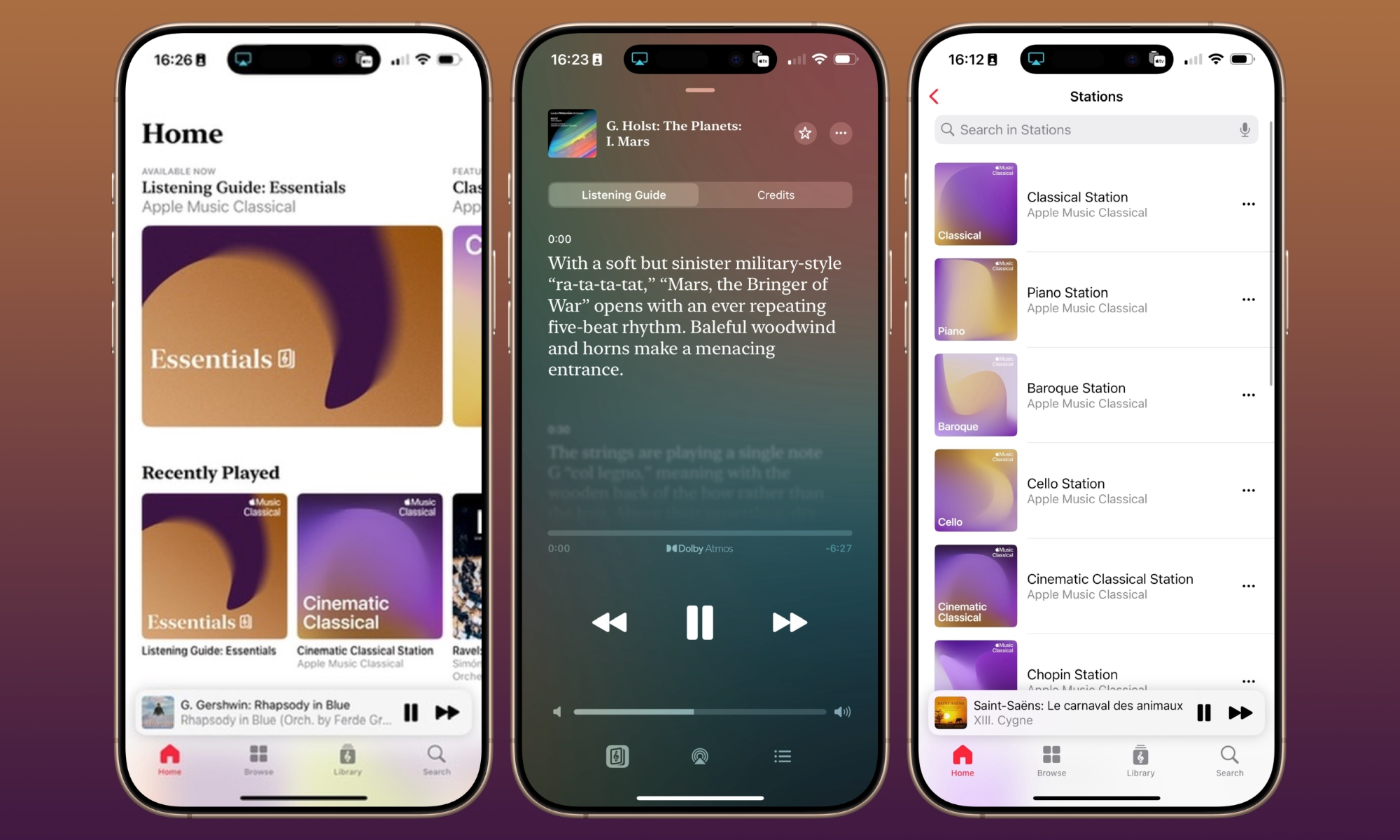Apple Music Classical Adds Listening Guides and Curated Stations

Toggle Dark Mode
Classical music fans just got a nice bonus from Apple Music today, with an update to the Apple Music Classical app that adds new features to help folks discover new works and learn more about the ones they’re currently enjoying.
The updates come as part of an app update: Apple Music Classical 2.2 landed on the App Store earlier today with the following release notes:
Dive deeper with time-synced listening guides for 150+ popular works, enjoy nonstop music with curated stations, and get daily personalized recommendations on Home.
The most interesting of these three new features are the time-synced listening guides, which provide play-by-play liner notes for each section of the work. For example, while listening to Bach’s Brandenburg Concerto No. 3, notes vary between explaining how he uses different musical techniques as the relevant sections are played, interspersed with historical notes, such as how “Bach dedicated his six concertos to the Margrave of Brandenburg,” or why he scored his third concerto to for three violins, three violas, and three cellos (because “the number three, symbol of God the Father, Son, and Holy Spirit, held profound significance in Bach’s lifetime.”)
These time-synced listening guides appear where lyrics would be shown in typical Apple Music tracks and work in much the same way. That makes them pretty straightforward from a technical perspective, but someone has to go through and add all this information.
From what I’ve seen so far, they’re remarkably well done, but this is also why you’ll only find them in a handful of works, although they are available in English, French, German, Japanese, Korean, and Simplified Chinese. Apple has helpfully added some Listening Guide Playlists to get you started. Also, unlike time-synced lyrics in the main Apple Music app, there’s no way to share a specific part of a listening guide.
“From identifying the instruments they’re hearing to explaining the drama behind a symphony or a concerto, the expert commentary turns the listening experience into a learning experience by opening doors on some of the most enduring and admired works of classical music,” an Apple spokesperson said in an email to MacRumors.
The other two new features are something that Apple Music users will already be more familiar with. Apple Music Classical gains human-curated stations centered around specific composers, periods, and instruments, with a few genres, like “Cinematic Classical,” tossed into the mix. There are 15 right now, but Apple will undoubtedly expand these in time. These join the curated playlists that have been available from the start but provide a more open-ended listening experience.
Along the same lines, Apple Music Classical will offer personalized music recommendations based on your listening history, just like Apple Music already does for non-classical genres.
Combined, these new features take Apple Music Classical to a higher level for those who really want to dive in and explore the world of classical music, which has been one of Apple’s design goals for the app from the beginning — to create an app that’s not just for hardcore classical music experts but also for those who are just dipping their ears in for the first time. In addition to properly cataloging and organizing classical works in a way that Apple Music can’t, Apple Music Classical also provides composer biographies and organizes works on multiple levels, letting you find everything performed under a specific conductor or a collection of works written and performed on the harpsichord.
Sadly, Apple Music Classical remains available only on the iPhone, iPad, Android, and the web. It’s usable on a Vision Pro via the iPadOS app, but Mac users will need to turn to the web version. There’s also no tvOS app yet, which is a shame, as it would be great to see the time-synced listening notes on the big screen.








